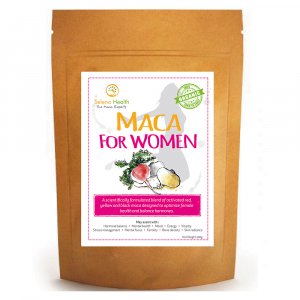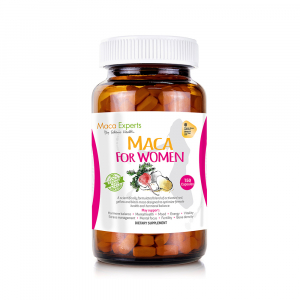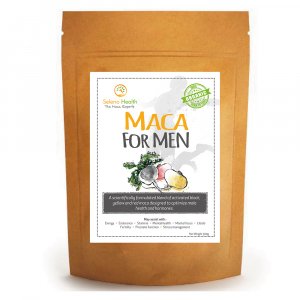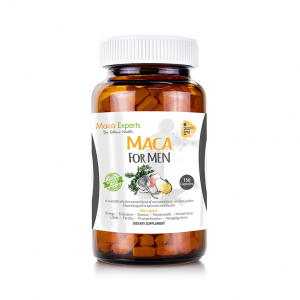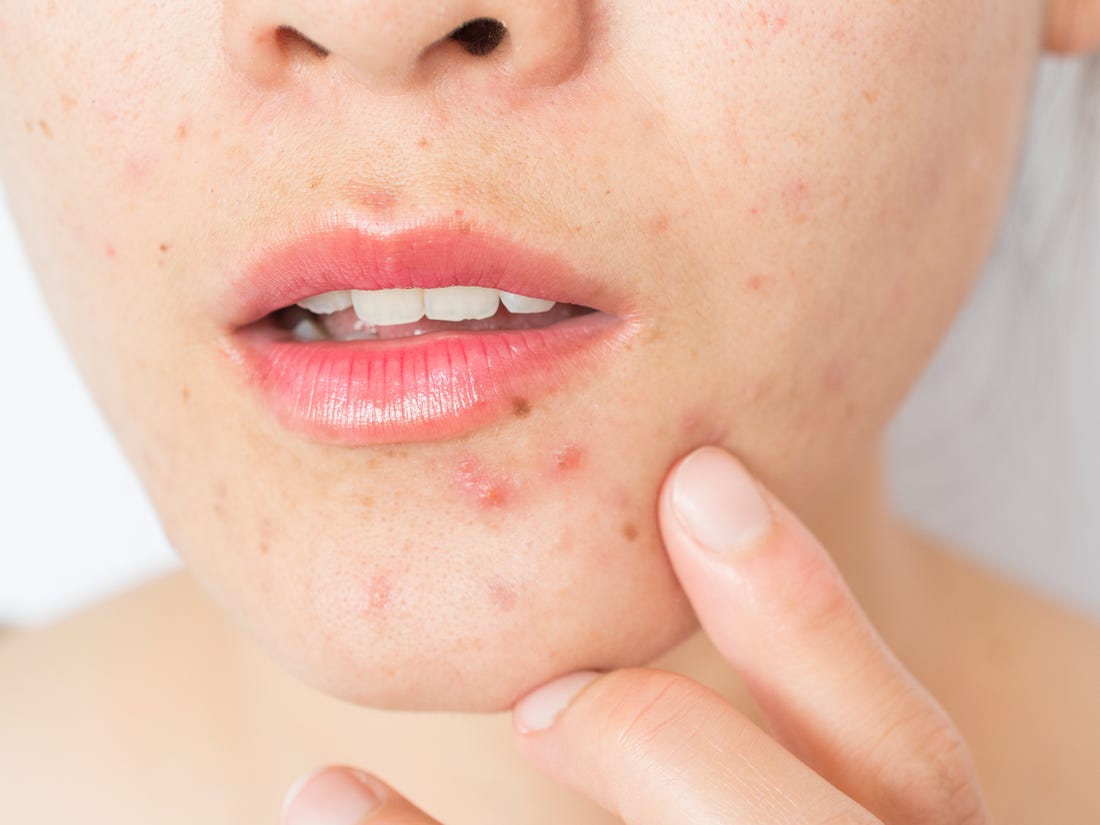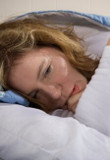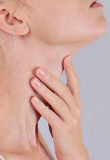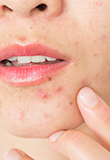How to treat acne with maca
Take 1-1.5 tsp per day or 3-5 capsules of Maca for Women or Maca for Men with breakfast or lunch. Minimum suggested treatment time is 6-12 weeks. Beyond this you may continue to consume maca daily and do not require taking a break from treatment if you are receiving positive benefits. For recipe ideas of how to include maca in your daily routine download our recipe booklet here or watch our recipe channel here.
For Women
1-1.5 tsp daily
For Women
3-5 capsules daily
For Men
1-1.5 tsp daily
For Men
3-5 capsules daily
Maca for treating acne
Acne vulgaris, more generally known as acne, is a common skin disease impacting both men and women throughout life. Some acne may be stress induced or others may be related to hormonal imbalances and/or hygiene.
Some people may experience persistent acne-which starts in adolescence and continues through adulthood-or recurrent acne-which occurs in adolescence, improves, and then reappears after 25 years of age1. Alternatively, for some people late onset acne only appears after 25 years of age 1,2. No matter when acne appears, it impacts daily life, as people with acne commonly experience mental and social anxiety, depression, and a lower self-esteem 3-5.
Acne occurs when hair follicles become blocked, leading to clogged pores. Acne also develops when the body makes excess sebum-an oil that stops the skin from drying out. When the body makes surplus sebum, this can clump with dead skin cells in a pore, increasing bacteria, inflammation and acne 1,6-9. Some of the causes of acne are:
- Hormonal dysfunction
- Genetics
- Cosmetics use
- Diet
- Stress
One of the major causes of acnes is hormonal imbalance of estrogen, progesterone and testosterone 1,8,10. During adolescence, increased testosterone levels increases sebum levels and oily skin, therefore clogging pores 6. However, adults may also experience hormonal imbalances. Adult hormonal imbalance is also associated with acne, such as elevated androgen levels 1,8,10,11. Multiple scientific studies conclude that acne patients would benefit from anti-androgen therapy and thus hormonal contraceptive pills are used to treat acne 1,8,12,13. Other treatments, such as topical antibiotics target the inflammatory acne, while topical retinoids can decrease sebum production 6,12.
Since there are numerous causes of acne, multiple treatments may be required to treat this skin disease. Not all treatments will be appropriate for all patients-especially since acne impacts both men and women. Additionally, most treatments target only one causes of acne-either the hormone dysfunction or the inflammatory response. However, recent data suggest that Lepidium meyenni (maca), a traditional Peruvian plant used as a natural supplement, may provide a healthy alternative to treat acne and protect the skin 14-16.
How maca can assist with acne
Recent data demonstrate that maca may treat acne in a multi-faceted approach, through both hormonal regulation and antibacterial activity. For example, maca can regulate hormonal balance by regulating testosterone levels, as oral administration of maca extract decreased serum testosterone in a dose dependent manner 17. In laboratory settings, maca treatment also regulates sex-hormones including estrogen, progesterone, and testosterone, further demonstrating the potential benefits of maca in hormonal regulation 18,19. In additional to hormonal balance, maca extract also demonstrated broad-spectrum antibacterial activity in both cell culture, as well as decreased bacterial activity in rodents 20,21. Furthermore, topical treatment applied to the skin has shown to generally protect the skin16. Altogether, both the hormonal regulation and antibacterial activity of this natural supplement suggest that maca may provide a natural method to improve skin health and treat acne.
Customer Testimonials for our maca with acne
GREAT FOR ACNE, ENERGY AND BETTER BALANCE!!
I love the Maca for Women! It tastes amazing and is super versatile which is awesome, I add it into all my cooking and baking daily! I have noticed a huge improvement in my skin, in particular it has calmed down my acne. I used to have swollen, painful acne around my chin, which is largely hormone related, and this has cleared up. I also really feel the difference in my resilience to stress if I stop taking maca. When i'm taking maca daily I am more energetic, level headed and adaptable to life! Also super ethically sourced and really well researched! Amazing product!

AMAZING FOR SKIN
I wouldn't be without my daily maca. I have noticed a definite improvement in my skin, kind of a nice glow, and I love how this blend incorporates the black and red maca together with the yellow for extra potency. Thank you for bringing us such a high-quality, well-sourced ethical maca, as well as the screeds of research and information you have made available.. and for being such lovely people to deal with.

BEST MACA YET
The most delicious maca I've tasted yet! Delicious, highly nutritious, socially and ecologically responsible. My favourite source of maca. Thank you both.

Note: There is no upper limit with maca and everybody is different, so it is important to find your ideal dose that is right for your body, for some this may be less than the recommended for others it may be more. If you experience positive health benefits then we suggest you continue treatment at that ideal dosage. The material provided on this website is for information purposes only. It is not intended to replace medical advice or be a treatment for any medical condition. Users should consult a health professional if you have any concerns about your health, are starting any health or nutritional related treatment, or for any questions you may have regarding your own or any other party’s medical condition. Information and statements regarding dietary supplements have not been evaluated by the Food and Drug Administration and are not intended to diagnose, treat, cure, or prevent any disease.
Bibliography
- Sardana K, Bansal P, Sharma LK, Garga UC, Vats G. A study comparing the clinical and hormonal profile of late onset and persistent acne in adult females. International Journal of Dermatology. 2020;10:37. doi:10.1111/ijd.14748. https://www.ncbi.nlm.nih.gov/pubmed/31898819
- Perkins AC, Maglione J, Hillebrand GG, Miyamoto K, Kimball AB. Acne Vulgaris in Women: Prevalence Across the Life Span. https://homeliebertpubcom/jwh. 2012;21(2):223-230. doi:10.1089/jwh.2010.2722. https://www.ncbi.nlm.nih.gov/pubmed/22171979
- Beisert M, Pilarczyk K, cosmetic MZJO, 2019. Sexual satisfaction and self-esteem in women with acne. europepmcorg. https://onlinelibrary.wiley.com/doi/abs/10.1111/jocd.13207
- Yentzer BA, Hick J, Reese EL, Uhas A, Cutis SF, 2010. Acne vulgaris in the United States: a descriptive epidemiology. Europepmcorg. https://www.ncbi.nlm.nih.gov/pubmed/20919604?dopt=Abstract
- Bhate K, Williams HC. Epidemiology of acne vulgaris. British Journal of Dermatology. 2013;168(3):474-485. doi:10.1111/bjd.12149. https://www.ncbi.nlm.nih.gov/pubmed/23210645
- Fox L, Csongradi C, Aucamp M, Plessis Du J, Gerber M. Treatment Modalities for Acne. Molecules 2016, Vol 21, Page 1063. 2016;21(8):1063. doi:10.3390/molecules21081063. https://www.ncbi.nlm.nih.gov/pubmed/27529209
- Li X, He C, Chen Z, Zhou C, Gan Y, Jia Y. A review of the role of sebum in the mechanism of acne pathogenesis. Journal of Cosmetic Dermatology. 2017;16(2):168-173. doi:10.1111/jocd.12345. https://www.ncbi.nlm.nih.gov/pubmed/28556292
- Bansal P, Sardana K, Sharma L, Garga UC, Vats G. A prospective study examining isolated acne and acne with hyperandrogenic signs in adult females. Journal of Dermatological Treatment. 2020;136(1):1-4. doi:10.1080/09546634.2019.1708245. https://www.ncbi.nlm.nih.gov/pubmed/31868042
- Cutis ZD, 2006. The effect of a daily facial cleanser for normal to oily skin on the skin barrier of subjects with acne. europepmcorg. https://www.ncbi.nlm.nih.gov/pubmed/16910029
- Uysal G, Sahin Y, Unluhizarci K, et al. Is acne a sign of androgen excess disorder or not? European Journal of Obstetrics & Gynecology and Reproductive Biology. 2017;211:21-25. doi:10.1016/j.ejogrb.2017.01.054. https://www.ncbi.nlm.nih.gov/pubmed/28178574
- Kurokawa I, Danby FW, Ju Q, et al. New developments in our understanding of acne pathogenesis and treatment. Exp Dermatol. 2009;18(10):821-832. doi:10.1111/j.1600-0625.2009.00890.x. https://www.ncbi.nlm.nih.gov/pubmed/19555434
-
12. Katsambas AD, Dessinioti C. Hormonal therapy for acne: why not as first line therapy? facts and controversies. Clinics in Dermatology. 2010;28(1):17-23. doi:10.1016/j.clindermatol.2009.03.006. https://www.ncbi.nlm.nih.gov/pubmed/20082945
- Ebede TL, Arch EL, Berson D. Hormonal treatment of acne in women. The Journal of Clinical and Aesthetic Dermatology. 2009;2(12):16-22. https://www.ncbi.nlm.nih.gov/pmc/articles/PMC2923944/
- Wang S, Zhu F. Chemical composition and health effects of maca (Lepidium meyenii). Food Chem. 2019;288:422-443. doi:10.1016/j.foodchem.2019.02.071. https://www.ncbi.nlm.nih.gov/pubmed/30902313
- Gonzales-Arimborgo C, Yupanqui I, Montero E, et al. Acceptability, Safety, and Efficacy of Oral Administration of Extracts of Black or Red Maca (Lepidium meyenii) in Adult Human Subjects: A Randomized, Double-Blind, Placebo-Controlled Study. Pharmaceuticals (Basel). 2016;9(3):49. doi:10.3390/ph9030049. https://www.ncbi.nlm.nih.gov/pubmed/27548190
- Castañeda CG, Rivera V, Chirinos AL, Evelson P, Gonzales GF. Photoprotection against the UVB‐induced oxidative stress and epidermal damage in mice using leaves of three different varieties of Lepidium meyenii (maca). International Journal of Dermatology. 2011;50(8):928-938. doi:10.1111/j.1365-4632.2010.04793.x. https://www.ncbi.nlm.nih.gov/pubmed/21781063
- Chung F, Rubio J, Gonzales C, Gasco M, Gonzales GF. Dose–response effects of Lepidium meyenii (Maca) aqueous extract on testicular function and weight of different organs in adult rats. J Ethnopharmacol. 2005;98(1-2):143-147. doi:10.1016/j.jep.2005.01.028. https://www.sciencedirect.com/science/article/pii/S0378874105000759
- Meissner HO, Mrozikiewicz P, Bobkiewicz-Kozlowska T, et al. Hormone-Balancing Effect of Pre-Gelatinized Organic Maca (Lepidium peruvianum Chacon): (I) Biochemical and Pharmacodynamic Study on Maca using Clinical Laboratory Model on Ovariectomized Rats. International Journal of Biomedical Science : IJBS. 2006;2(3):260-272. https://www.ncbi.nlm.nih.gov/pubmed/23674989
- OSHIMA M, GU Y, TSUKADA S. Effects of Lepidium meyenii Walp and Jatropha macrantha on Blood Levels of Estradiol-17 β, Progesterone, Testosterone and the Rate of Embryo Implantation in Mice. J Vet Med Sci. 2003;65(10):1145-1146. https://www.ncbi.nlm.nih.gov/pubmed/14600359
- Wang X, Zhang J, Communications ICP, 2016. Acai, cacao and maca extracts: Anticancer activity and growth inhibition of microbial triggers of selected autoimmune inflammatory diseases. researchgatenet. https://www.semanticscholar.org/paper/Acai%2C-cacao-and-maca-extracts%3A-Anticancer-activity-Wang-Zhang/d8386b2e124d3feaa3599b93f1dc07edd38d8924
- B V B B, H S V, H S V, K SP. Hydroalcoholic extract from Lepidium meyenii (Black Maca) root exerts wound healing activity in Streptozotocin-induced diabetic rats. Wound Medicine. 2017;19:75-81. https://www.sciencedirect.com/science/article/abs/pii/S2213909517300186

